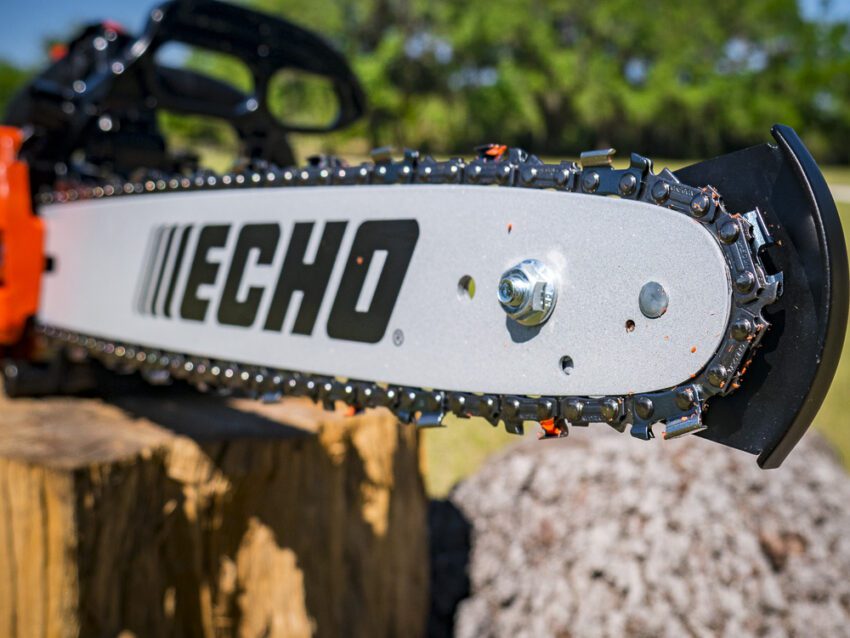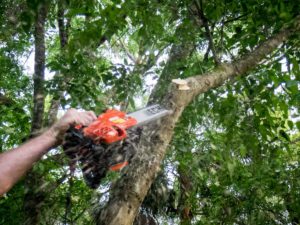Chainsaws can be finicky. Its job involves spinning a barbed chain at high velocity to rip and shred through logs. Between gas, oil, tension, and general wear and tear, your chainsaw needs a fair amount of TLC. The biggest area of concern—and one that arrives frequently—involves the chain. Many chainsaw users question how to know when to replace a chainsaw chain rather than continue sharpening it.
We have the answer.
Table of Contents
- Why a Sharp Chainsaw Chain Matters
- How You Know You Have a Dull Chainsaw Blade or Chain
- I Just Sharpened My Chain and It Still Seems Dull
- Wear Markers Tell You When You Can No Longer Sharpen the Chain
- Check for Missing Teeth or Tooth Damage
- When to Replace the Chainsaw Chain Sprocket
- When to Replace the Chainsaw Guide Bar
- Summary on How to Know When to Replace a Chainsaw Chain
Why a Sharp Chainsaw Chain Matters
Everyone knows the business end of your chainsaw, the chain, can quickly dull. Dull chainsaw chains are an ineffective and dangerous thing. Chains require frequent sharpening. You can’t, however, sharpen a chainsaw chain indefinitely. We hope to help you know when it’s time to give up on sharpening and start thinking about replacing a chainsaw chain.
Let’s start with making sure you understand how to tell if that chainsaw blade is dull.
How You Know You Have a Dull Chainsaw Blade or Chain
Does your chain pull itself into the wood, or do you need to force it? A dull chain won’t eat into what you need to cut as well. This forces you to apply more pressure than normal. This can cause undue stress on the engine and bar as well as further dulling out your chain.
Does the chain rattle around or bounce when cutting? Not only does this affect accuracy, but it signals that it might be time to either sharpen or replace your chainsaw chain.
If you happen to see smoke when cutting, despite the fact that you know your chainsaw oiler is working and your tension is correct, you probably have some sharpness issues.
When cutting, if your chainsaw pulls in one direction, you might need to think about replacing your chainsaw blade. This is an indication that your cutting teeth have dulled on one side of the chain, or that the cutting teeth lengths are uneven.
Check the sawdust. When making cross-cuts or split cuts, the chain should create coarse strands, not fine dust. If you see the latter, you probably have a dulled-out chain.
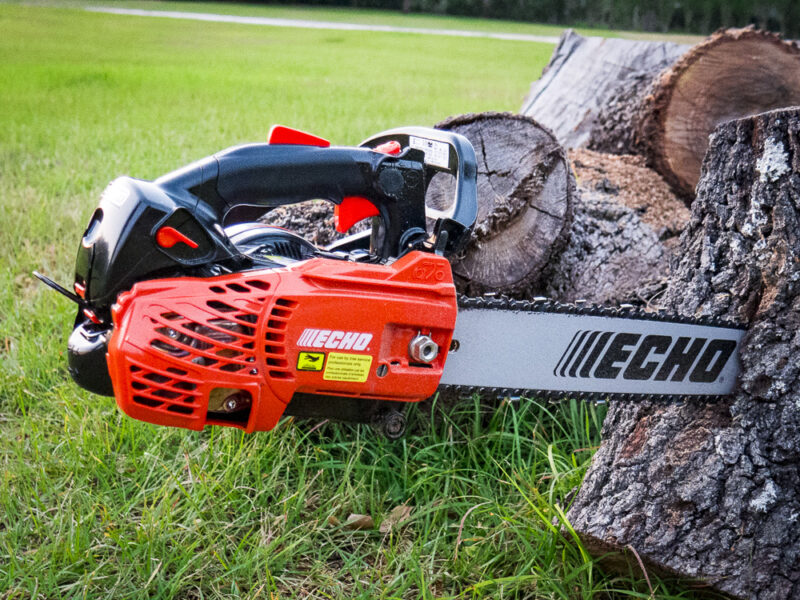
I Just Sharpened My Chain and It Still Seems Dull
Ah. If you recently sharpened your chain, but you still notice some or all of the above symptoms, take heed. You may have reached the end of this particular chain’s usefulness. At this point, replacing the chainsaw chain altogether seems like the wisest course of action.
Wear Markers Tell You When You Can No Longer Sharpen the Chain
Many chainsaw chains include wear markers that let you know the maximum depth to which you can sharpen the teeth. It’s no rocket science, however. You can only sharpen the teeth until the angle you sharpen at begins to cut into the rear of the tooth. This Husqvarna chain has definitely reached its limit:
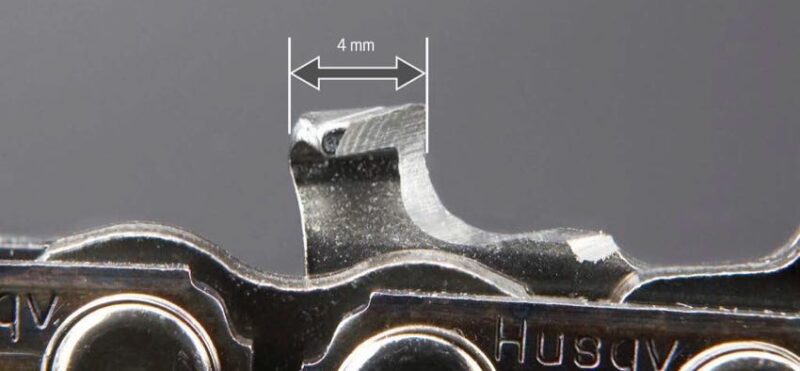
Stihl also has a great image on their website that shows both the top and bottom wear marks:
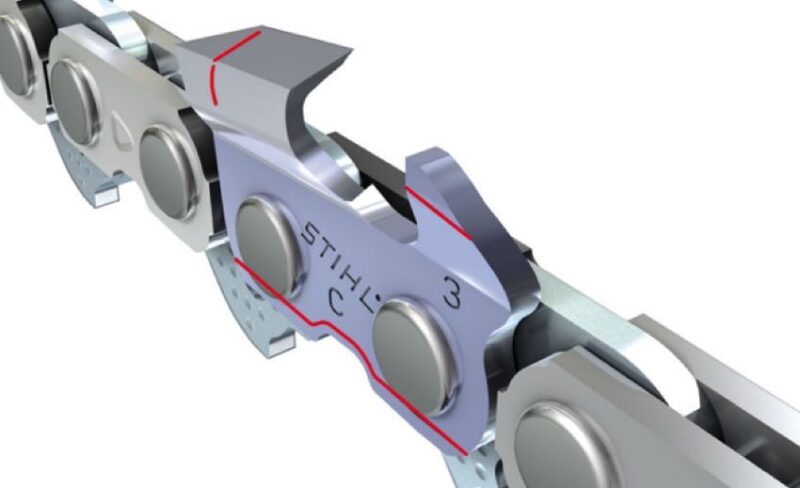
You definitely want to pay attention to the bottom of your chain teeth. If you run the chain too hot (without oil or enough bar oil, for example) it can wear down to the point where the bottom of the tooth lets the rivets contact the bar. If that happens, you know it’s time to replace the chainsaw chain.
Check for Missing Teeth or Tooth Damage
Another sign that replacing a chainsaw chain makes sense, as opposed to just running a file around it, is when you notice broken, damaged, off-center, or missing teeth on the chain. You can technically use a chain that you can keep sharp if the teeth are at different wear points. However, cutting with missing teeth or damaged chain never warrants the risk.
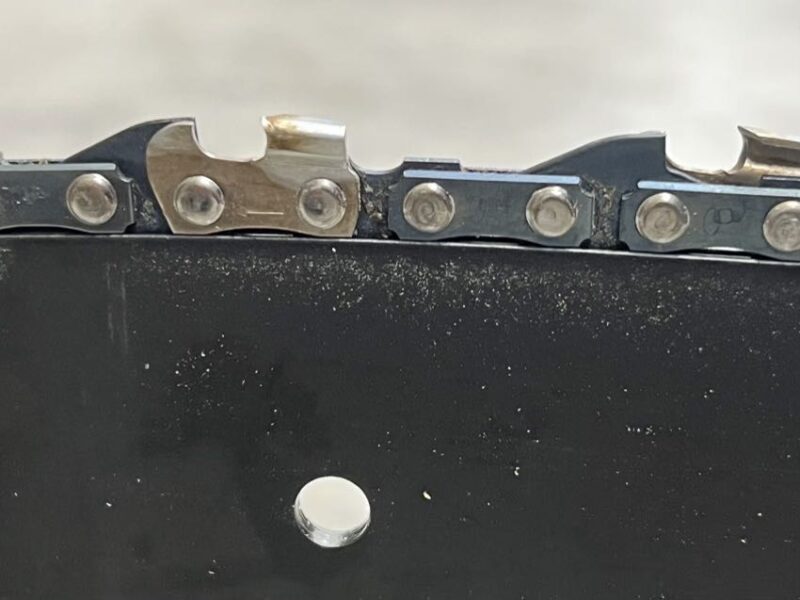
If your chain exhibits any of these signs, go ahead and spring for a new chain. They generally aren’t crazy expensive, and your chainsaw will cut much more effectively.
Speaking of the relatively low cost of chainsaw chains, some folks even skip out on sharpening altogether, opting instead for replacing a chainsaw chain as it gets dull. We recommend picking up a file and learning how to sharpen a chain. For one thing, you could potentially save yourself a trip to the store when you’re in the middle of a long job. But also, dumping perfectly usable chainsaw chains into the landfill seems like poor stewardship of our planet.
When to Replace the Chainsaw Chain Sprocket
Sometimes premature chain wear reveals a deeper problem—like the actual chain sprocket. For example, if the depth of wear on your chain sprocket hits the 0.5mm mark (the typical wear limit), it needs to be replaced immediately. An inexpensive control gauge can tell you if the sprocket has reached that limit, but you should be able to see it with the naked eye.
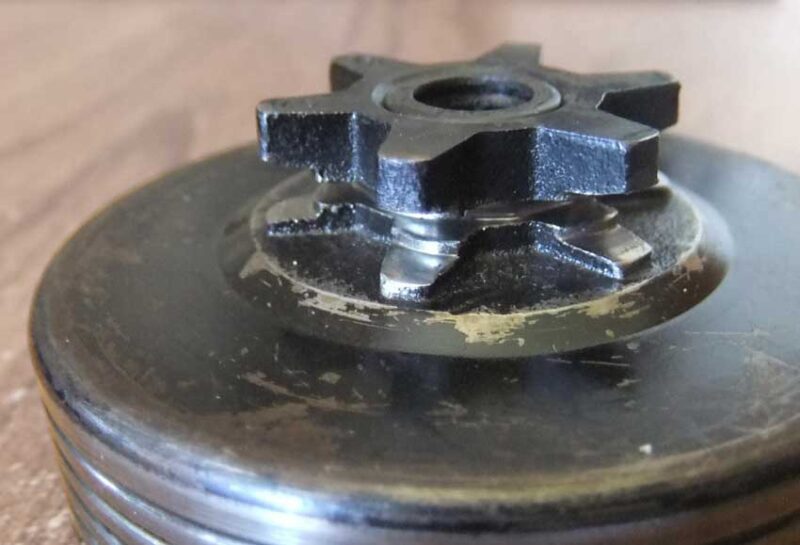
Essentially, the thin drive links should fit in between the troughs of the chain sprocket so they can be driven by the motor at speed. Eventually, the constant pressure of the drive links can wear narrow grooves into the sprocket. This introduces play into the chain, damages the chain and guidebar, and reduces cutting efficiency and performance. Eventually, the entire tool can fail.
When to Replace the Chainsaw Guide Bar
Knowing when to replace the guide bar often takes a bit more knowledge—or a tool. Guide bars wear down when the rail wears away from long-term chain friction and heat. That causes a reduction in the depth of the groove in which the chain travels.
It can also wear in a way that allows the chain to lean to one side or the other. This affects its ability to cut since the sharpened chain teeth no longer bite into the wood at the proper angle.
If the bar wears down too much, the chain will “bottom out” in the groove, causing lots more heat and dramatically reduced cutting efficiency.
Pro Tip: Flip your guide bar over peridically (we recommend every time you sharpen the chain). The chain guide bar will wear more aggressively on the bottom due to the pressure typically placed on it when cutting.
Stihl Recomended Guide Bar Groove Depth
| Chain Pitch | Min. Groove Depth |
|---|---|
| 1/4″ P | 4 mm |
| 1/4″ | 4 mm |
| 3/8″ P | 5 mm |
| .325″ | 6 mm |
| 3/8″ | 6 mm |
| .404″ | 7 mm |
Summary on How to Know When to Replace a Chainsaw Chain
The big picture with how to know when to replace a chainsaw chain comes down to paying attention. It also helps to have a regular maintenance schedule. If you flip the bar and inspect the saw every time you sharpen the chain, you have built-in opportunities for maintenance. Keep the chain oiled and sharp and you can ensure the longest life possible from your chains.
Did we miss anything? If you have any additional tips for recognizing and knowing when it’s time to replacing a chainsaw chain, leave us a comment below.

